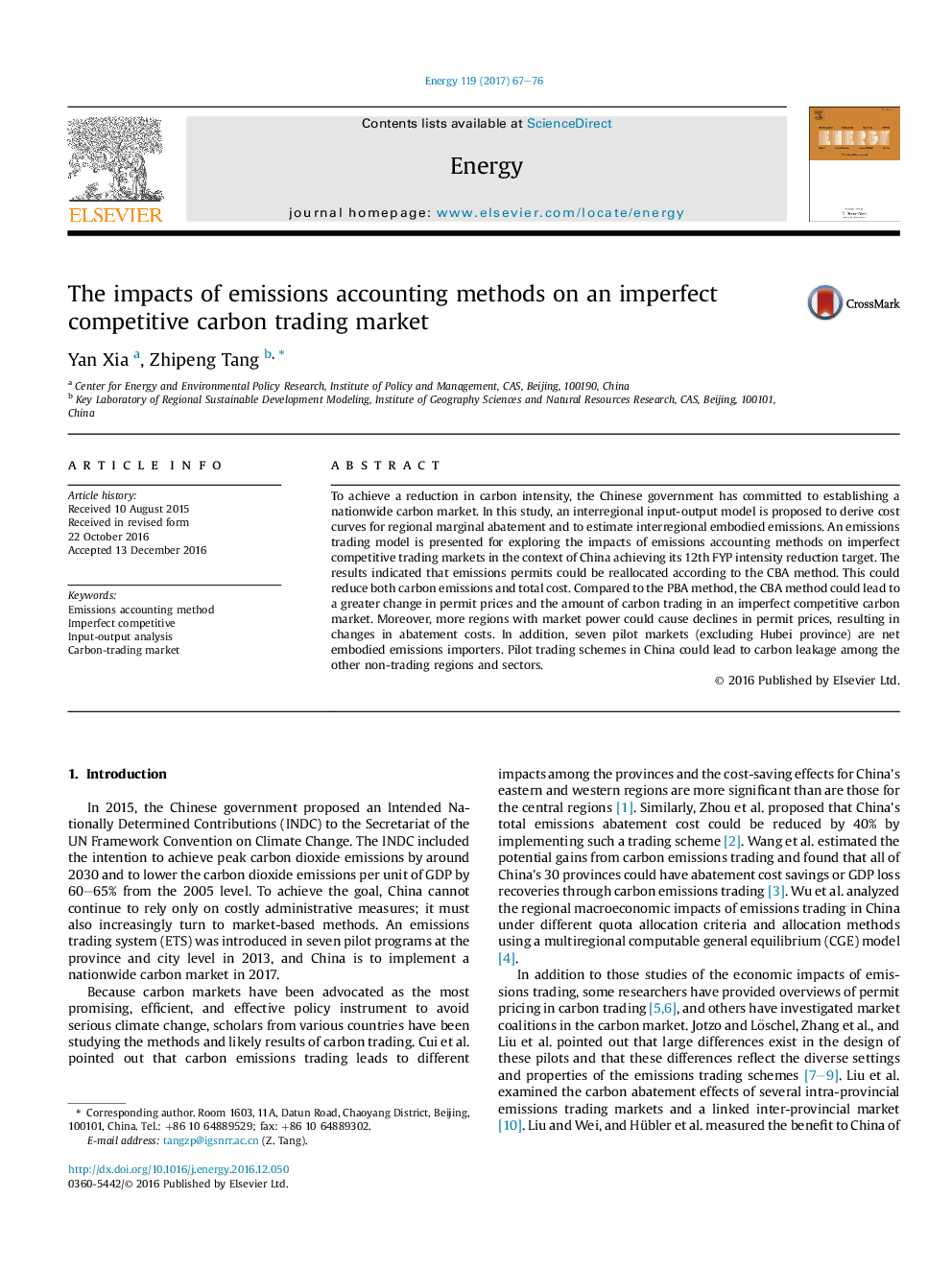| Article ID | Journal | Published Year | Pages | File Type |
|---|---|---|---|---|
| 5476864 | Energy | 2017 | 10 Pages |
Abstract
To achieve a reduction in carbon intensity, the Chinese government has committed to establishing a nationwide carbon market. In this study, an interregional input-output model is proposed to derive cost curves for regional marginal abatement and to estimate interregional embodied emissions. An emissions trading model is presented for exploring the impacts of emissions accounting methods on imperfect competitive trading markets in the context of China achieving its 12th FYP intensity reduction target. The results indicated that emissions permits could be reallocated according to the CBA method. This could reduce both carbon emissions and total cost. Compared to the PBA method, the CBA method could lead to a greater change in permit prices and the amount of carbon trading in an imperfect competitive carbon market. Moreover, more regions with market power could cause declines in permit prices, resulting in changes in abatement costs. In addition, seven pilot markets (excluding Hubei province) are net embodied emissions importers. Pilot trading schemes in China could lead to carbon leakage among the other non-trading regions and sectors.
Keywords
Related Topics
Physical Sciences and Engineering
Energy
Energy (General)
Authors
Yan Xia, Zhipeng Tang,
